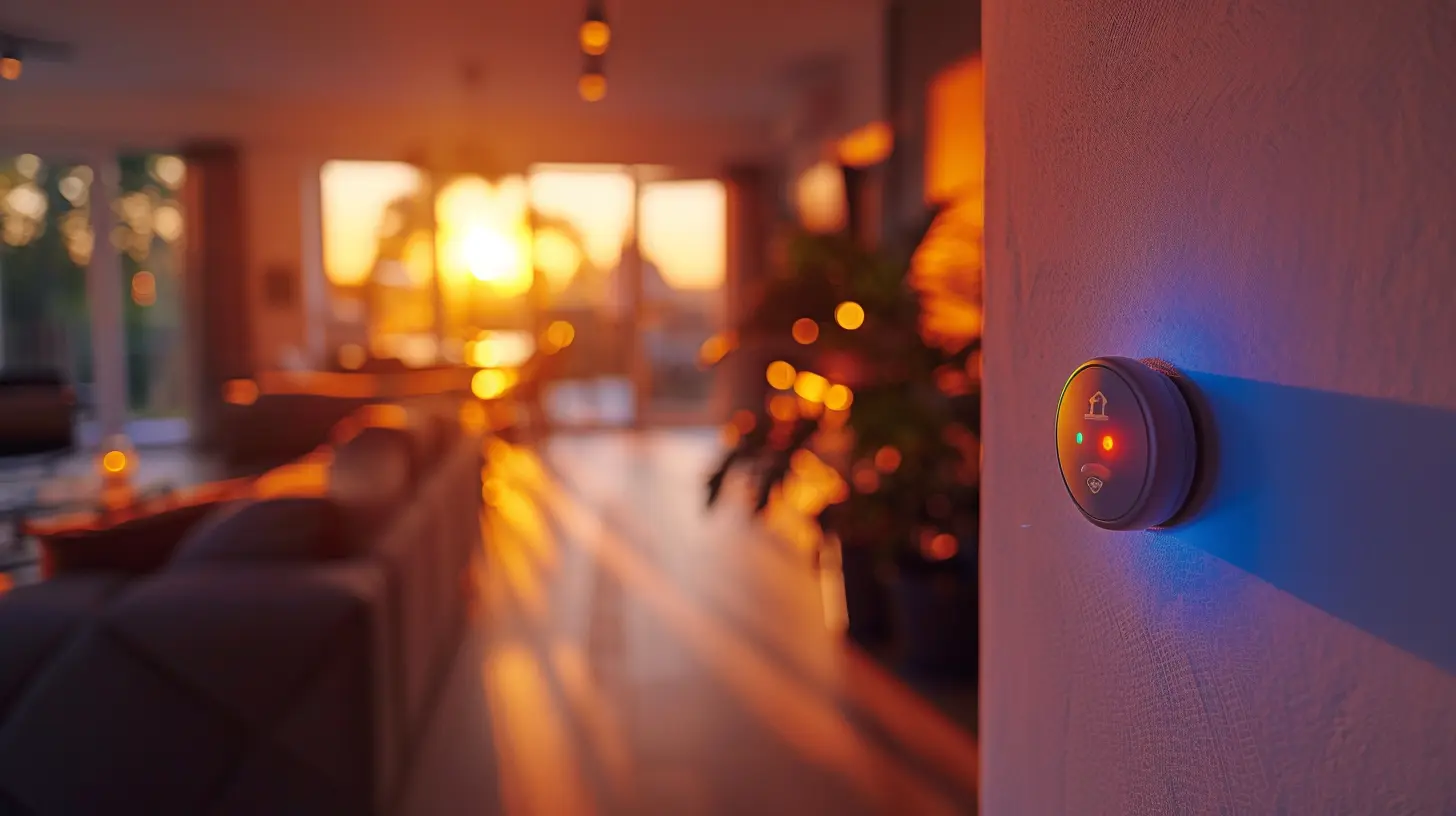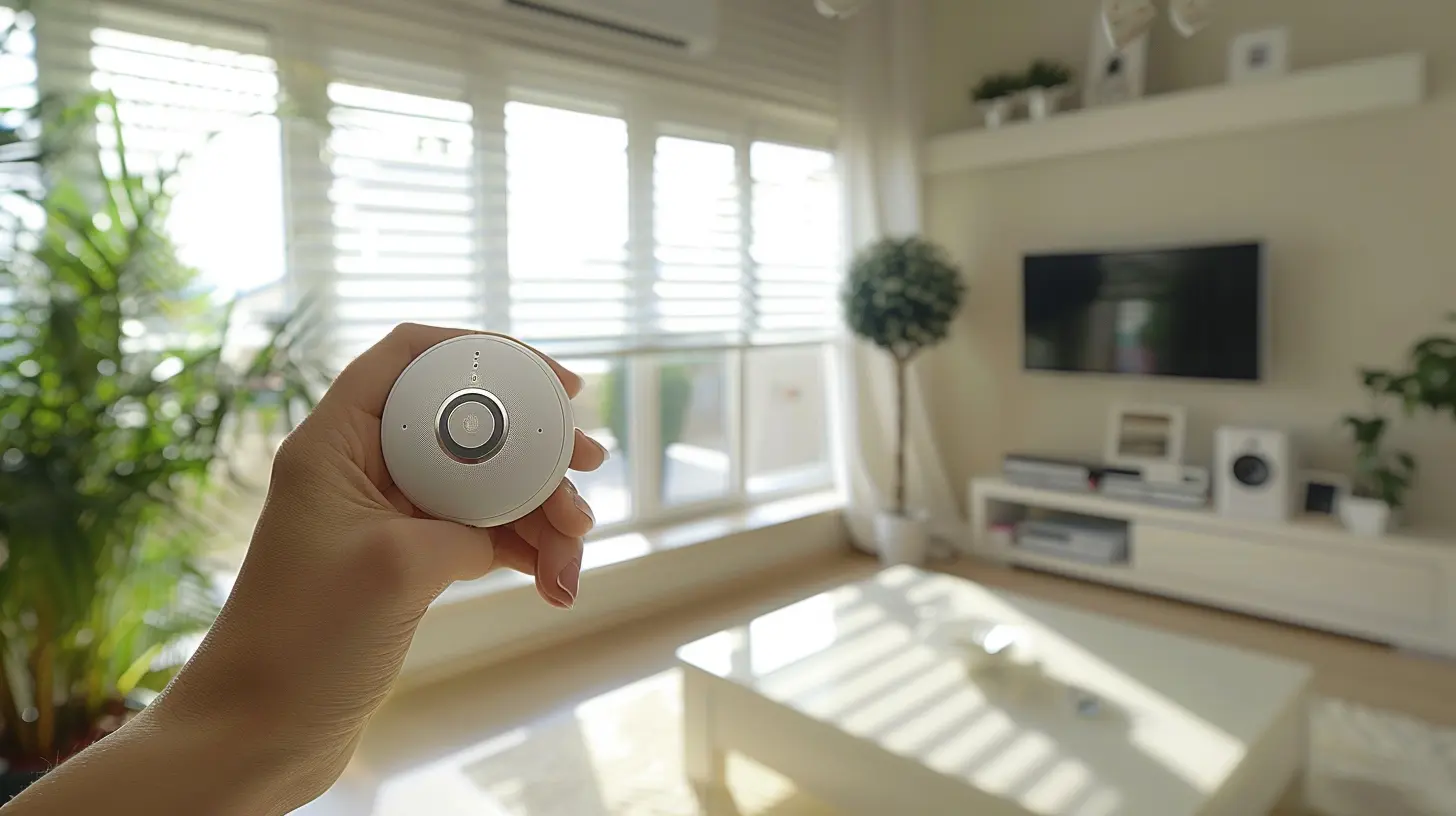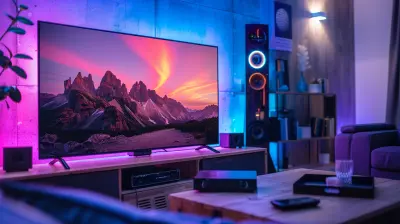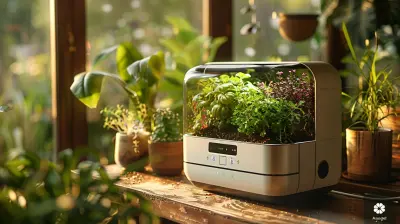Smart Home Sensors: The Key to a Truly Connected Space
2 February 2025
Imagine walking into your home and, without lifting a finger, the lights brighten up, the thermostat adjusts to your preferred temperature, and your favorite playlist starts playing. Sounds like something out of a sci-fi movie, right? But, thanks to smart home sensors, this futuristic fantasy is becoming a reality for many people today. These tiny, often unnoticed devices are the unsung heroes of home automation, working behind the scenes to create a seamless and connected living experience.
In this article, we’ll dive deep into the world of smart home sensors, exploring how they work, why they’re the key to a truly connected space, and what types of sensors you should consider for your home. So, if you’re curious about how to make your home smarter and more efficient, keep reading!

What Are Smart Home Sensors?
First things first—what exactly are smart home sensors? Simply put, smart home sensors are devices that detect changes in their environment and send that information to other smart devices or hubs. These changes could be anything from motion, temperature, humidity, or even the opening and closing of a door. Once the sensor picks up on this change, it triggers a response from another device, like turning on a light, adjusting the thermostat, or sending you a notification.Think of them as the "eyes" and "ears" of your smart home—constantly monitoring what’s happening and making decisions based on real-time data. Without sensors, your smart devices wouldn’t be as smart or responsive. For example, what good is a smart light if it doesn’t know when to turn on or off? That’s where sensors come in.

Why Are Smart Home Sensors So Important?
You might be asking yourself, "Why do I even need smart home sensors? Can’t I just control my smart devices with my phone?" Well, sure, you could do that, but that’s not really taking full advantage of what a smart home can offer.Here’s the thing: Smart home sensors take the hassle out of everyday tasks. They make your home intuitive, meaning it can anticipate your needs without you having to lift a finger. Imagine your house being able to "sense" when you’re home, asleep, or away. It’ll automatically adjust things like lighting, temperature, and even security settings based on your habits and preferences. That’s next-level convenience!
Additionally, smart sensors can improve your home’s energy efficiency. Instead of leaving lights or appliances running when they're not in use, sensors can automatically turn them off, saving you money on your utility bills. Plus, they can enhance security, alerting you instantly if something’s unusual—like a window being opened when you’re not home.

Types of Smart Home Sensors
Now that you know why they’re important, let’s take a closer look at some of the most popular types of smart home sensors you can incorporate into your home.1. Motion Sensors
Motion sensors are one of the most widely used smart home sensors, and for good reason. They can detect movement in a specific area and trigger an action, like turning on a light or sending you a notification. These sensors are perfect for security purposes since they can alert you if someone enters your home when they shouldn’t. But they’re also great for convenience—like automatically turning on the lights when you walk into a room.Some motion sensors are even sophisticated enough to differentiate between humans and pets, so Fido won’t accidentally trigger your security system.
2. Temperature Sensors
Temperature sensors monitor the temperature in a room or area and can be integrated with a smart thermostat. If the temperature rises or falls outside of your preferred range, it can automatically adjust your HVAC system to keep your home comfortable. These sensors are especially useful for managing energy consumption, as they prevent your heating or cooling systems from running when they don’t need to.Plus, if you have a baby or elderly person in the house, keeping the temperature just right can be crucial for their comfort and well-being.
3. Window and Door Sensors
These sensors are simple but effective. They can tell you whether a window or door has been opened or closed. This is especially useful for security purposes, as you’ll be notified immediately if a door or window is opened when it shouldn’t be. You can even set up automations, like turning off the HVAC system when a window is opened to avoid wasting energy.Some smart home systems will also allow you to control your door locks remotely, so you can lock or unlock your doors from anywhere.
4. Water Leak Sensors
Water damage can be a nightmare, and it often goes unnoticed until it’s too late. Water leak sensors can detect leaks or excess moisture early, giving you the chance to fix the issue before it turns into a costly disaster. Place them near appliances like washing machines, dishwashers, or under sinks, and you’ll get an instant alert if there's an issue.These sensors can potentially save you thousands of dollars in damage repairs and help prevent mold growth, which is a whole other health hazard on its own.
5. Light Sensors
Light sensors can adjust your home's lighting based on the level of natural light available. For instance, if it’s bright and sunny outside, your lights will dim or turn off to save energy. But as it gets darker, the lights will brighten. This not only helps save on electricity but also creates a more comfortable living environment, automatically adjusting the ambiance to match the time of day.6. Smoke and Carbon Monoxide Sensors
Safety first! Smoke and carbon monoxide sensors are essential for any home. These smart sensors can detect smoke or dangerous levels of carbon monoxide and trigger alarms, send notifications to your phone, and even alert the authorities if necessary. What makes them "smart" is that they can be integrated with your other devices—like automatically turning off your HVAC system to prevent the further spread of smoke.7. Occupancy Sensors
Unlike motion sensors, which detect movement, occupancy sensors detect the presence of people in a room. They’re often used in commercial buildings but can be just as beneficial in homes. For example, an occupancy sensor can tell whether there’s still someone in a room before turning off the lights or adjusting the temperature, ensuring you’re never left in the dark or too cold.8. Humidity Sensors
Humidity sensors monitor the moisture levels in the air and keep your home’s humidity at a comfortable level. These sensors are especially useful in areas like bathrooms, basements, or laundry rooms where moisture levels tend to spike. High humidity can lead to mold growth, while low humidity can cause dry skin and respiratory issues.By integrating humidity sensors with a smart thermostat or dehumidifier, you can maintain optimal air quality in your home.

How to Set Up Smart Home Sensors for Maximum Efficiency
Alright, so now that you know about the various types of smart home sensors, let’s talk about how to set them up effectively.1. Start Small and Build Up
Don’t feel like you need to go all-in right away. Start with one or two sensors, like motion sensors or door/window sensors. Once you get comfortable with how they work, you can gradually add more to different areas of your home.2. Strategic Placement
Where you place your sensors matters. For example, place motion sensors near entry points like doors or hallways where there’s a lot of foot traffic. Place temperature sensors away from direct sunlight or vents to get the most accurate readings. Take the time to think about which areas of your home need monitoring and which sensors will best serve those needs.3. Automate for Convenience
The real magic of smart home sensors happens when you start automating tasks. For example, you could set up a "Goodnight" routine where the lights dim, doors lock, and the thermostat adjusts to your preferred sleep temperature—all triggered by a simple voice command or the time of day. Get creative and think about how everyday tasks can be automated to make your life easier.4. Integrate with a Smart Hub
To get the most out of your smart home sensors, you’ll want a central smart hub that can connect all your devices. Think of the hub as the "brain" of your smart home, coordinating between your sensors and other devices like lights, thermostats, and security systems. Popular hubs include Amazon Echo, Google Nest, and Apple HomeKit.The Future of Smart Home Sensors
As technology continues to evolve, smart home sensors will only get more advanced, offering even greater convenience and security. We’re already seeing developments in AI and machine learning that allow sensors to "learn" your habits over time and make even more intelligent decisions.In the near future, we could see sensors that can detect more nuanced environmental changes—like air quality, noise levels, or even emotional states. Imagine a home that can sense when you’re stressed and automatically adjust the lighting, play calming music, and lower the temperature to help you relax. The possibilities are endless!
Conclusion
Smart home sensors are truly the key to creating a connected, automated living space that works for you. Whether you’re looking to improve your home’s security, energy efficiency, or overall convenience, these tiny but powerful devices can make a world of difference. So, if you haven’t already, maybe it’s time to start investing in smart home sensors and experience the future of home living today.all images in this post were generated using AI tools
Category:
Home AutomationAuthor:

Jerry Graham
Discussion
rate this article
16 comments
Adam Pace
Great insights! Smart home sensors really do enhance our living spaces, making them more comfortable and convenient. Thanks for sharing!
February 23, 2025 at 5:25 AM

Jerry Graham
Thank you! I'm glad you found it insightful—smart home sensors truly do transform our living environments.
Tank Warner
The article effectively highlights how smart home sensors enhance connectivity and efficiency in daily life. By integrating data from various devices, they not only optimize energy usage but also improve security and comfort, paving the way for a seamless, intelligent living environment. A promising future indeed!
February 22, 2025 at 8:00 PM

Jerry Graham
Thank you for your insightful comment! I'm glad you found the article highlights the benefits of smart home sensors in creating a more connected and efficient living space.
Valen Gilbert
Smart home sensors enhance our living spaces by providing seamless connectivity and automation, fostering comfort and efficiency. Embracing this technology can transform daily routines for the better.
February 22, 2025 at 4:55 AM

Jerry Graham
Thank you for your insightful comment! I completely agree—smart home sensors truly revolutionize our daily lives by enhancing comfort and efficiency.
Rune Morris
Smart home sensors are revolutionizing how we interact with our living spaces. By seamlessly integrating with smart devices, they enhance security, energy efficiency, and convenience. Embracing these innovations can lead to a more comfortable and responsive home environment, transforming daily routines into effortless experiences.
February 21, 2025 at 3:37 AM

Jerry Graham
Thank you for your insightful comment! Smart home sensors indeed play a crucial role in creating a connected and convenient living environment. Their integration enhances our daily experiences significantly.
Solaria Snyder
Great insights! Smart home sensors truly enhance our living spaces, making them more efficient and personalized. Exciting times ahead!
February 18, 2025 at 9:47 PM

Jerry Graham
Thank you! I’m glad you found the insights valuable. Exciting times indeed as technology continues to transform our homes!
Joel Rivera
Smart sensors: turning homes into tech-savvy habitats—where even the fridge has Wi-Fi! 🍕🔌
February 17, 2025 at 1:32 PM

Jerry Graham
Absolutely! Smart sensors really do transform everyday appliances into integral parts of our connected homes, enhancing convenience and efficiency. 🍽️✨
Zinn Lamb
Great article! Smart home sensors truly are transformative, enhancing our everyday lives with convenience and efficiency. Embracing this technology not only simplifies tasks but also creates a more connected and responsive living environment. Exciting times ahead!
February 16, 2025 at 4:19 AM

Jerry Graham
Thank you for your kind words! I'm glad you found the article insightful. Exciting times indeed as we embrace these transformative technologies!
Ivan McNaughton
Fascinating insights on smart home sensors! I love the idea of creating a truly connected space. It’s intriguing how these devices can enhance our daily lives. I’m curious to see how they evolve and integrate with emerging technologies. What’s next for smart homes?
February 12, 2025 at 1:48 PM

Jerry Graham
Thank you! The future of smart homes looks promising with advancements in AI and IoT, enabling even greater integration and automation. Stay tuned for innovations that will further enhance connectivity and convenience!
Juliet Lane
Smart home sensors enhance convenience, security, and energy efficiency, creating a seamless connected living experience.
February 11, 2025 at 7:36 PM

Jerry Graham
Thank you! I completely agree—smart home sensors are indeed essential for a connected and efficient living environment.
Asher Spencer
Ah, yes, because what we really need is our toaster sending us text alerts about the bread’s browning level. Truly, nothing says "connected space" quite like knowing the exact moment our Wi-Fi-enabled fridge starts contemplating its existence.
February 7, 2025 at 5:26 AM

Jerry Graham
While it may seem trivial, smart home sensors enhance convenience and efficiency, making everyday tasks easier and allowing us to focus on what truly matters.
Capri McGuire
Exciting possibilities! How might smart sensors transform our daily routines and enhance our living experiences?
February 6, 2025 at 9:41 PM

Jerry Graham
Smart sensors can automate tasks, optimize energy use, enhance security, and provide personalized environments, ultimately making our daily routines more efficient and our living experiences more enjoyable.
Colin Pacheco
Exciting insights on enhancing our connected living!
February 6, 2025 at 5:11 AM

Jerry Graham
Thank you! I'm glad you found the insights valuable for enhancing connected living.
Madison Henderson
Smart home sensors are game changers! They make daily life smoother and more efficient. Can't wait to see how they evolve in the future!
February 4, 2025 at 12:38 PM

Jerry Graham
Thank you! We’re excited about their potential too and can’t wait to see how they continue to enhance our daily lives.
Kendall Reed
Embrace the future with smart sensors! They make your home smarter, safer, and way more fun! 🔑🏠✨
February 4, 2025 at 5:58 AM

Jerry Graham
Absolutely! Smart sensors enhance convenience, security, and enjoyment in our homes, paving the way for a truly connected living experience. Thanks for your enthusiasm!
Taryn Kim
Smart home sensors pave the way for a seamless, interconnected living experience. By enhancing automation and providing real-time insights, they empower users to optimize efficiency and comfort. Embracing this technology transforms our homes into responsive, adaptive environments for modern living.
February 2, 2025 at 8:32 PM

Jerry Graham
Absolutely! Smart home sensors are indeed revolutionizing how we interact with our living spaces, making them more efficient and comfortable. Thank you for your insights!
Rhiannon McDowney
Smart sensors truly transform our everyday living!
February 2, 2025 at 1:21 PM

Jerry Graham
Absolutely! Smart sensors enhance convenience and efficiency, making our homes more intuitive and connected.
MORE POSTS

How to Drive Employee Engagement Through Digital Tools

Smart TVs vs Traditional TVs: Is It Worth the Upgrade?

Smart Garden Gadgets for the Eco-Conscious Homeowner

The Role of Virtual Reality in Space Missions: Training Astronauts for the Unknown

How AR Glasses Are Changing the Sports Industry

Best Tools for Cloud Security Monitoring and Incident Response

Why Mobile Gaming is the Future of Gaming

How to Leverage Gamification in Your E-Commerce Strategy

Understanding Machine Learning: The Backbone of AI

AR Glasses vs VR Headsets: Which Is Better for You?